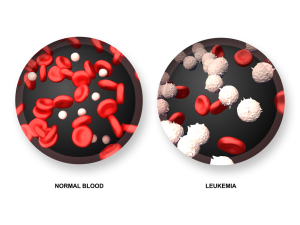Introduction
Acute leukemia is not a very common blood cancer. In the USA only about 5 per 100,000 adults are affected every year and about 2000 cases are children.
Over the years acute leukemia has been a very popular topic with the public. This is probably so, because this blood disorder can be a very devastating illness, where the patient gets sick very quickly and dies within a few weeks or months, if untreated.
On the other hand, there has been a tremendous breakthrough in this field both for childhood leukemia as well as for adult leukemia (see links under “Related Topics” below). Some important scientific discoveries took place in the 1970’s and 1980’s, which have revolutionized leukemia treatment. Leukemia therapy has become more effective in the 1970’s with the introduction of combination chemotherapy with less toxic substances and has been refined more since then. Bone marrow transplant is available on a larger scale since the 1980’s. All of this has increased leukemia survival significantly. I will mention some of these developments under the various forms of acute leukemia.
There are different cell types that make up acute leukemia. For instance ,with acute myelogenous leukemia (also called “acute myeloid leukemia”, AML for short) the leukemia arises out of a precursor cell for granulocytes in the bone marrow. With acute lymphoblastic leukemia (ALL for short) the precursor cells that were destined to become lymphocytes, called lymphoblasts turned leukemic.
For the hematologist who treats leukemias it is important to distinguish between these various leukemia cell lines. This is done with special cytochemical stains on blood smears and smears from bone marrow biopsies that help to distinguish between ALL and AML. Genetic studies may also be done to look for gene mutations that are used as markers.
When the diagnosis is established beyond any doubt and the hematologist has determined that treatment has a good chance of making the patient better on the long run, treatment can be started.
References:
1. Cancer: Principles &Practice of Oncology. 4th edition. Edited by Vincent T. DeVita, Jr. et al. Lippincott, Philadelphia,PA, 1993. Chapter on Acute Leukemia.
2. Cancer: Principles&Practice of Oncology. 5th edition, volume 2. Edited by Vincent T. DeVita, Jr. et al. Lippincott-Raven Publ., Philadelphia,PA, 1997. Chapter on Acute Leukemia.
3. Conn’s Current Therapy 2004, 56th ed., Copyright © 2004 Elsevier
4. Ferri: Ferri’s Clinical Advisor: Instant Diagnosis and Treatment, 2004 ed., Copyright © 2004 Mosby, Inc







